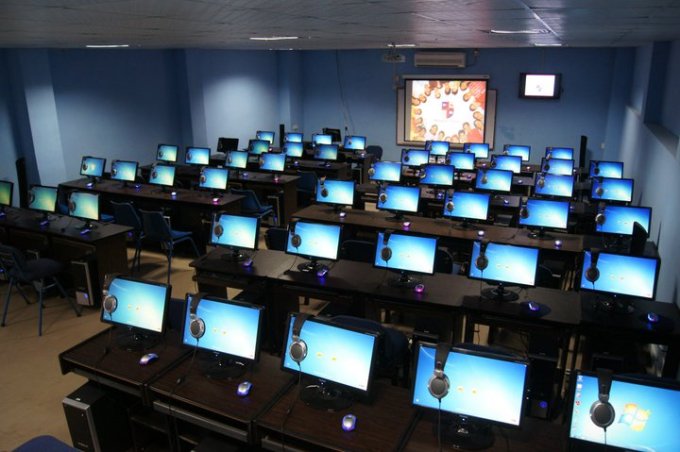Reflection on Emerging Technology
In the Global Competitiveness Report of the World Economic Forum (2010-2011), the Philippines ranked 99th out of 138 economies in the area of primary education, 69th in educational system, 112th in science and math and 76th on internet access. The Philippines ranked poorly in all categories. We are even falling behind its neighboring South East Asian countries including Singapore, Brunei, Malaysia, Indonesia, Thailand, and Vietnam, Moreover, Filipino students were among the lowest ranked in terms of performance as shown in the 2003 and 2008 Trends in International Mathematics and Science Study, trailing behind Malaysia and Indonesia.
At the national level, the results of National Achievement Tests administered to elementary and high school students, which were designed to determine what the students know, understand and can do at their level, show unsatisfactory results. At the secondary level, students’ scores in five consecutive years registered the lowest score at 44,33% in school year (SY) 2005-2006 and highest at 49.26% in SY 2008-2009 which were far below from the passing rate of 75%.
The Legislative Branch of Government.
Introduced by Rep. Alfredo Benitez on the Sixteenth Congress, the House Bill 53, also known as, Institutionalizing the Implementation of the Cyber Education Program Through the Cyber Education Development and Management Corporation and Appropriating Funds Therefore, a solutions to address the deteriorating quality of education is through the utilization of various information and communications technology (ICT) as a tool for learning and teaching. Several studies have underscored the benefits of integrating ICT particularly in the education system. Utilizing l T significantly contributed to the acquisition and absorption of knowledge among the students by increasing their motivation and engagement in classroom activities, particularly, a computer with interact connectivity provides the learner an opportunity to connect with other people and provides them ready access to data.
The Executive Branch of Government.
President Benigno Aquino III of our Philippine Republic announced that the government eyes the use of tablet computers in public schools instead of traditional textbooks, during the launch of the country’s K-12 curriculum (Enterprise Innovation, 2012).
The use of technology in education has significantly aided students in performing their school-related tasks. The learning process of the students’ becomes more fun with the user-interactivity and visuals present in these learning tool.
The Rise of Computers
Department of Education Secretary Armin Luistro maintains that we’re not only building classrooms and toilets but the real revolution in education which has long-term effects can only be done through information technology. As of 2012, 95 percent of public high schools have computer labs, but only 57 percent have access to the internet (Department of Education, 2012).
Related technology in education is proven beneficial to teachers and students, and effective both cost-wise and education-wise. With the utilization of mobile devices such as laptops and tablet computers.
The Role of Internet
The internet helps the students in their education by having access to it enable them to research information and access online textbooks, (Project Tomorrow, 2011), Significant aspect of the web in education, is that, it also dissolves the artificial wall between the classroom and the real world. Students and teachers can establish interactive communication with anybody or any source, making
Learning more relevant to their lives “interests and concerns.”
Furthermore, through the use of the internet, pupils would be able to communicate and collaborate with classmates for school work.
The Power of Laptop.
There exist various programs by the government, non-government organizations and private corporations in the Philippines that aim to provide one laptop computer per child. With the presence of laptops in the classrooms, students become more engaged and involved in school-related activities (Oquias, 2011).
Learning Games and Applications
A vast collection of learning games and applications exist for these mobile devices, and as a matter of fact, there are about 96,000 educational applications available (App Store Metrics, 2013). The data collected by Apps in Education (2012) confirmed that the subject areas covered by these applications include Mathematics, Sciences, Grammar and Spelling and Arts and Humanities.
The Use of Mobile Devices.
Additionally, with the use of the mobile devices and access to internet, teachers able to communicate with their students more easily, and allows them to distribute learning materials such as assignments, exercises, and tests to their pupils, as suggested by Clegg and Bailey (2008). Likewise, through the use of the internet, instructors would have access to a vast amount of resources such as pictures for illustrations, various texts for class readings and so forth. Consequently, the Department of Education had employed a project in which all public schools in the country be connected to the internet (Calleja, 2011).
The E-Classroom packages,
The Department of Education (2012), reports that four percent or public elementary schools, are equipped with e-Classroom packages. Students benefit from utilizing computers in their education by making school work easier; likewise, the instructors benefit from the usage of technology in teaching. Gone are the days when instructors need to write out the topics on the chalkboard, prepare a Manila paper to display a text or show flash cards for Math drills. Now, presenting topics to students is as easy as a click on the keyboard, as the text or illustration immediately unfolds onscreen in a slideshow presentation (Labro, 2008). This not only makes preparing visual aids for class more efficient and less time-consuming, but it also helps keep the flow of discussion inside the classroom more interesting and more engaging to the students.
Emerging Technologies for Philippines 2020 by the Dela Salle University.
The Philippines’ potential to lead in information and communications technology (ICT) and Game Development is very promising. Currently, we are the preferred IT outsourcing candidate, second only to India.
Key areas to be tackled include E-governance, E-learning, Knowledge Management, and Game Development. Special attention is given to the Game Development industry which is expected to grow from $5M in 2004 to $9.8B by 2009.
The challenge for industry, government and academe is to unite in their efforts to maintain, if not improve the current situation of ICT in the country in order to explore these potentials. The Dela Salle University hold conference to response to that challenge. It will highlight current state of ICT in the country and its role in national development; promote awareness of current (local) research activities in key areas; and encourage research collaboration between industry, academe, government and private institutions.
Promotion on Use of ICT in Philippines Public and Private Schools: A Study in Ateneo de Manila University.
In a study made by Ma. Mercedes T. Rodrigo of the Ateneo de Manila, the Department of Information Systems mA Computer Science, the Philippines is one of many developing nations that have turned to information and communication technology (ICT) as a tool to improve teaching and learning_ Unfortunately„ implementation esters from several shortcomings: the absence of information on how ICT is actually used; a lack of coordination between public and private sector efforts; and insufficient teacher preparation_ This paper begins with a discussion of the pedagogical, social, and economic benefits that developing nations hope to gain by infusing schools with ICT. It cites national policies and program to infuse schools with IC7, as well as parallel programs initiated by the private sector. The paper then discusses each of the men atoned shortcomings- in turn-
Keyword; information and communication technology teacher preparation; developing nations; national policies; public and private sector.
Education in the Developing World
Education in developing countries takes place under circumstances that are substantially different from those in developed countries. The poorest countries spend the lust — absolutely and proportionately — on non-salary related educational expenditures (1). In the early 1980s, while African countries allocated only 3,646 of their education budgets to classroom materials, and developing countries in Asia spent 8.8%, industrialized countries vent 14_4% on books and learning aids (1). Lewin estimated that, while the richest countries spend as much as US$430 per child on non.-salary educational expenditures. The poorest countries disburse approximatelyliS$5 per child, of which US$1 or less goes to information and communication technology (ICT). It is, therefore, no surprise that in developing countries, school buildings commonly do not have concrete flooring, furniture, electricity, and water, and there is virtually no equipment for science, art, and other practical subjects (3). The Philippines is a developing country in Southeast Asia whose educational system shares many of the same problems and limitations as those Writs fellow developing nations. Some provincial schools lack chairs and tables, blackboards, and laboratory equipment (4)-
Some do not have electricity and water (5). There is a scarcity of learning aids in general_ In contrast; American students have 140 times more reading material available to them than their Filipino counterparts.
Pedagogical Benefits of ICT
Despite these conditions, the Philippines along with other develop countries in Asia. Africa and South America are generally interested in educational technology, particularly in ICT. Hoping that their educational systems reap the pedagogical benefits associated with it. Drill and practice or tutorial software, for example, individualizes instruction and provides students with immediate feedback (6). Students can proceed at their own pace. Internet connectivity enables students to access remote sources of information.
Reflection Summary.
The modern classroom now requires the use of computers, the internet and mobile devices practically in every school activity. With this idea in mind, the Department of Education has planned to modernize the Philippine classrooms in line with its K to 12 programs.
Today, education at all level is gearing towards a computer-centric learning environment. Through the implementation of technology inside the classroom, teachers and students can yield positive results within the learning environment and true-to-life situations.


